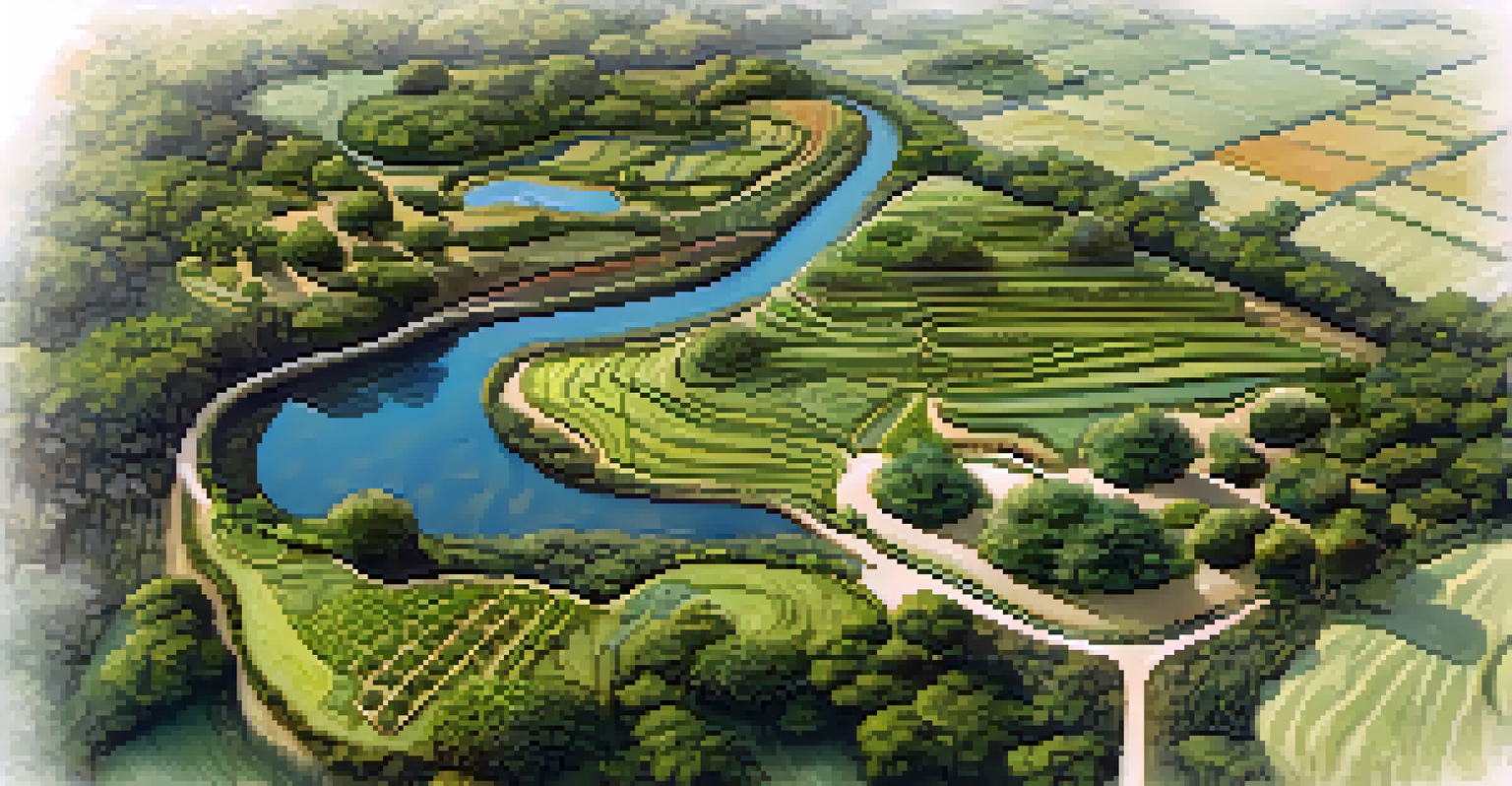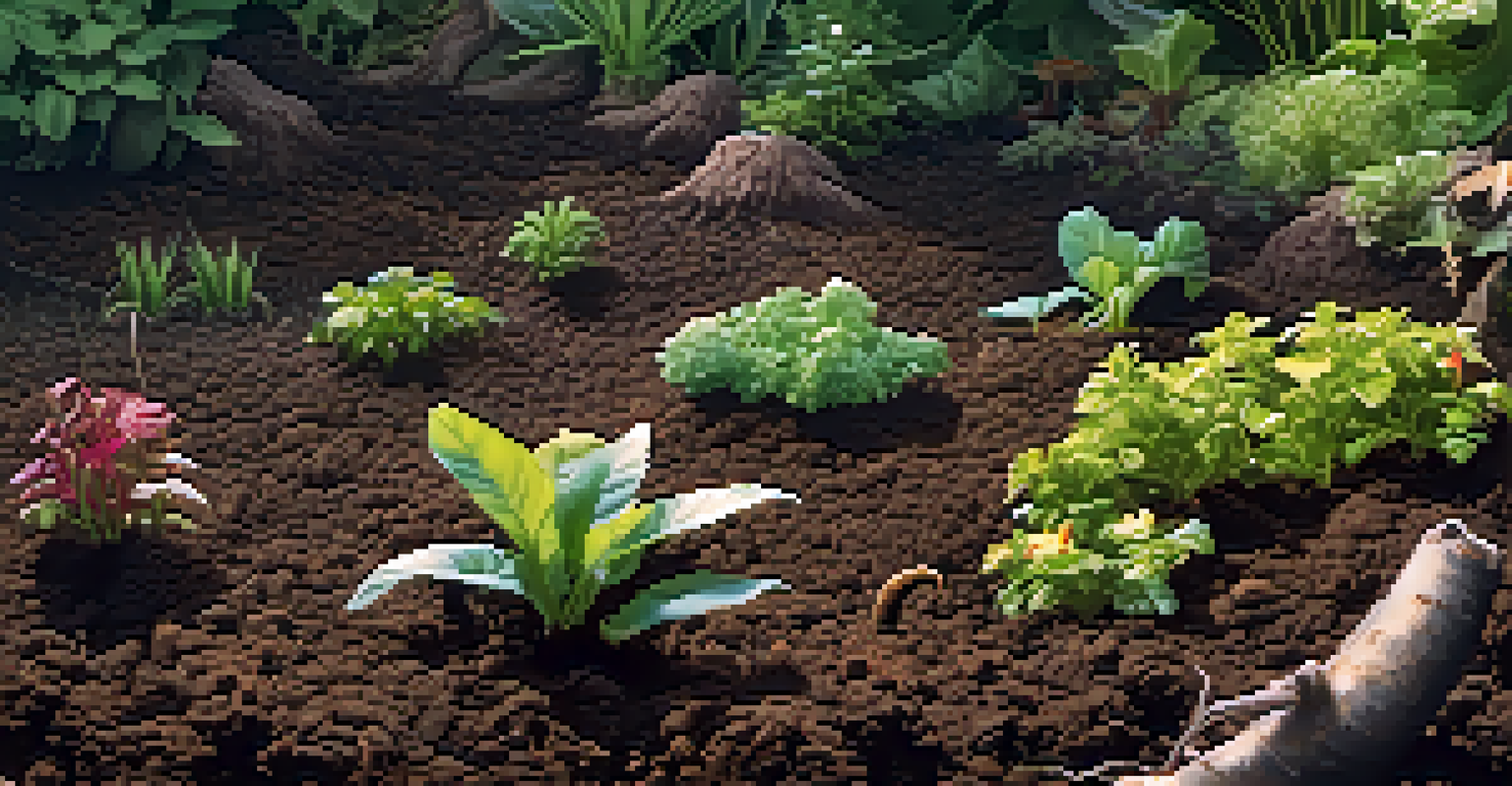Designing Sustainable Landscapes Using Permaculture Techniques

Understanding Permaculture: A Holistic Approach to Design
Permaculture is more than just a gardening technique; it's a philosophy that aims to create sustainable and self-sufficient ecosystems. By mimicking natural processes, permaculture encourages a holistic approach that integrates plants, animals, and humans. This interconnectedness fosters resilience and reduces the need for external inputs like fertilizers and pesticides.
The greatest threat to our planet is the belief that someone else will save it.
At its core, permaculture focuses on working with nature rather than against it. It promotes the idea of creating landscapes that can thrive with minimal human intervention, much like a forest or meadow. By observing natural ecosystems, we can learn how to design our landscapes to be more productive and sustainable.
For those looking to create a sustainable landscape, understanding permaculture principles is the first step. By integrating these ideas into your design process, you can cultivate a space that not only looks beautiful but also supports biodiversity and ecological health.
Key Principles of Permaculture Design
Permaculture is built on a set of core principles that guide the design process. These principles include observing and interacting, capturing and storing energy, and obtaining a yield. Each principle serves as a foundation for creating systems that are productive and sustainable, which is crucial for long-term success.

For example, by observing the patterns of sunlight and water flow in your landscape, you can make informed decisions about where to plant certain crops or install rainwater systems. Similarly, capturing energy—whether it's solar, wind, or water—helps in creating self-sustaining environments. This thoughtful approach can lead to thriving ecosystems that require less maintenance over time.
Permaculture is a holistic philosophy
It integrates natural processes to create sustainable ecosystems that benefit plants, animals, and humans.
Incorporating these principles into your design not only enhances productivity but also fosters a deeper connection with the land. It encourages you to think critically about your environment and how your actions impact it, paving the way for more sustainable living.
Choosing the Right Site for Your Permaculture Landscape
Selecting the right site is crucial for the success of a permaculture landscape. Factors such as soil quality, climate, and existing vegetation play a significant role in determining what can thrive in your space. A well-chosen site will enhance the natural features and limit the need for heavy modifications.
We do not inherit the earth from our ancestors, we borrow it from our children.
For instance, if you're working with poor soil, you might consider using raised beds or incorporating composting techniques to improve fertility. Similarly, assessing sun exposure can help you choose the best locations for sun-loving plants versus shade-tolerant species. This thoughtful site selection can save time, effort, and resources in the long run.
Ultimately, the right site will empower your permaculture design to flourish. By understanding the unique characteristics of your land, you can create a landscape that not only meets your needs but also contributes positively to the environment.
Designing Zones for Efficient Energy Use
In permaculture, zoning is an effective strategy for maximizing efficiency and minimizing waste. By organizing your landscape into zones based on frequency of use, you can make the most of your resources. For example, zone one might include herbs and vegetables that are harvested daily, while zone five could be left as a wild area for wildlife.
This zoning approach allows for easy access to the plants and resources you use most often, reducing the amount of time and energy spent on maintenance. It also encourages a more thoughtful arrangement of plants, ensuring that each zone serves its purpose effectively. This can lead to a more productive and harmonious landscape.
Soil health is foundational
Building and maintaining healthy soil through techniques like composting is essential for a thriving permaculture landscape.
By designing your landscape with zones in mind, you create a functional ecosystem that supports your lifestyle while respecting natural processes. It fosters a sense of balance between human needs and the environment, making sustainability achievable.
Building Healthy Soil: The Foundation of Permaculture
Healthy soil is the cornerstone of any sustainable landscape. In permaculture, the goal is to create and maintain rich, diverse soils that support plant growth and microbial life. Techniques such as mulching, composting, and cover cropping are essential for building soil health and fertility.
For example, adding organic matter like compost can improve soil structure, increase moisture retention, and boost nutrient availability. Cover crops, on the other hand, can prevent erosion and reduce weed competition while fixing nitrogen in the soil. These practices create a self-sustaining system that requires less input over time.
Investing time and effort into soil health pays off in the long run. By nurturing the foundation of your landscape, you can cultivate a thriving ecosystem that supports both plants and wildlife, leading to a more resilient landscape overall.
Water Management: Harvesting and Conserving Resources
Water management is a crucial aspect of sustainable landscape design. In permaculture, the goal is to capture and utilize water as efficiently as possible, ensuring that it supports plant life without being wasted. Techniques such as rainwater harvesting and creating swales can help achieve this.
For instance, swales are shallow ditches that help direct water flow and encourage infiltration into the soil. This not only reduces runoff but also nourishes plants in the surrounding area. Rain barrels can be used to collect runoff from roofs, providing a valuable resource for irrigation during dry spells.
Biodiversity boosts ecosystem resilience
Encouraging a variety of species within your landscape enhances ecological balance and reduces pest risks.
By implementing effective water management strategies, you can create a landscape that thrives even in challenging conditions. This not only conserves a precious resource but also supports the health of your plants and the ecosystem as a whole.
Encouraging Biodiversity in Your Landscape
Biodiversity is essential for a healthy and resilient landscape. In permaculture, encouraging a variety of plants, animals, and microorganisms promotes ecological balance and reduces the risk of pests and diseases. By creating habitats that support diverse species, you can cultivate a thriving ecosystem.
For example, planting native species can attract beneficial insects, such as pollinators, which are crucial for crop production. Additionally, incorporating companion planting—where certain plants are grown together to enhance growth—can further increase biodiversity and productivity. This interconnectedness helps create a more stable environment.

Ultimately, a biodiverse landscape not only benefits the plants and animals within it but also enhances the overall health of the ecosystem. By prioritizing biodiversity in your design, you contribute to a sustainable future for both your landscape and the planet.